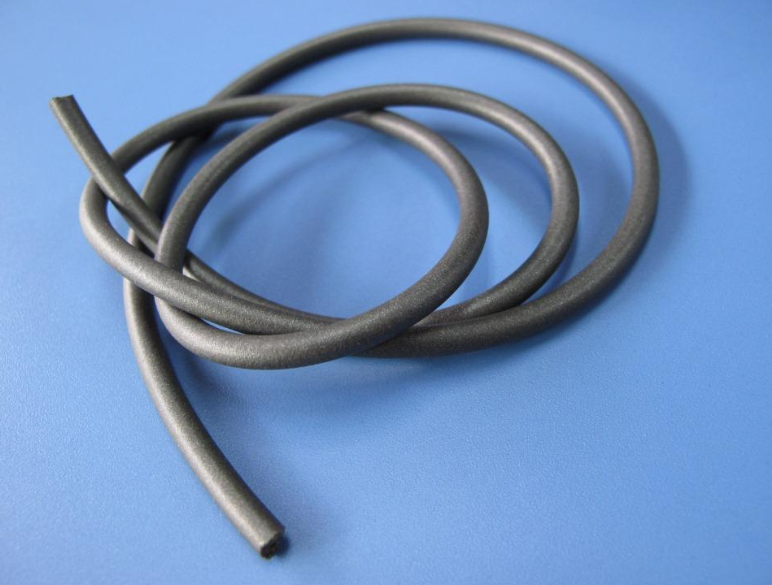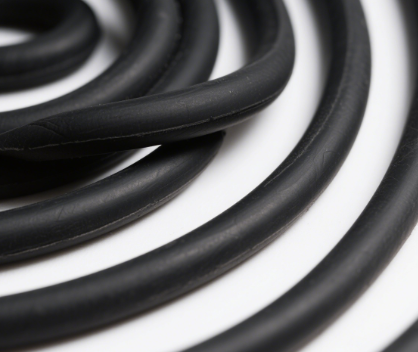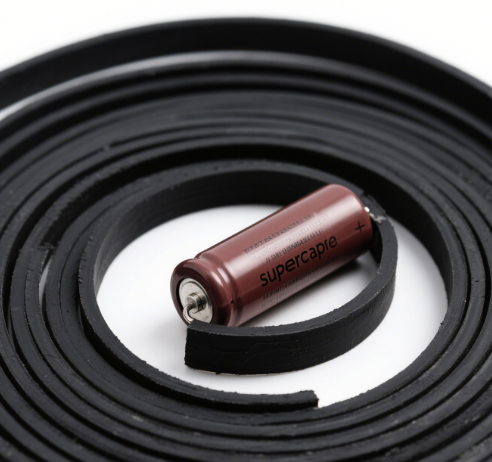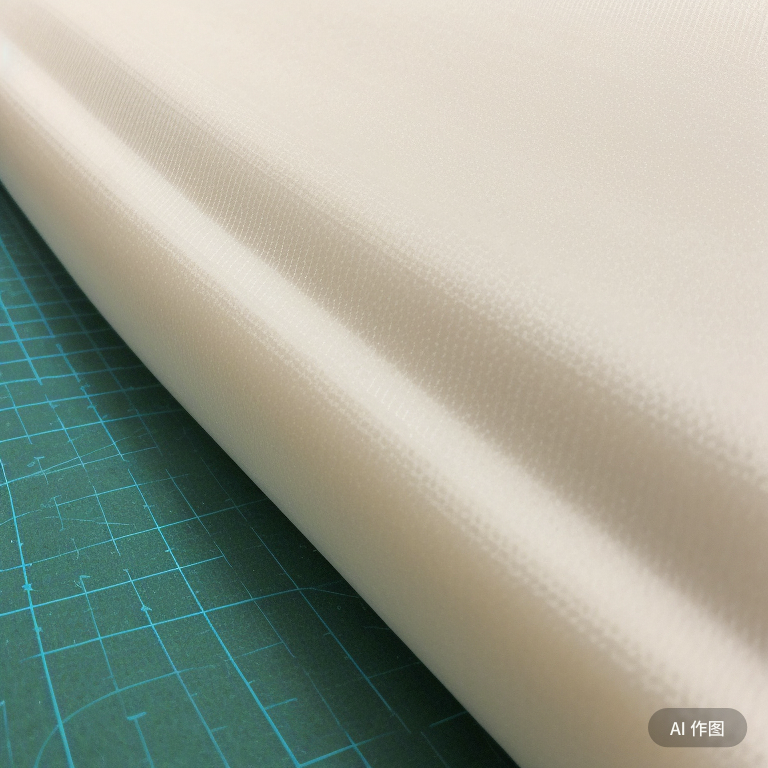What is conductive elastic rubber?
 Conductive elastic rubber is a functional composite material that integrates the elastic deformation ability of rubber materials with electrical conductivity. By uniformly dispersing conductive fillers in an elastic polymer matrix, it achieves the combination of mechanical flexibility and electrical conductivity, and is widely used in fields such as electronics, energy, and healthcare that have dual requirements for material elasticity and electrical conductivity. The following elaborates on aspects such as material properties, composition, applications, and technological development:
Conductive elastic rubber is a functional composite material that integrates the elastic deformation ability of rubber materials with electrical conductivity. By uniformly dispersing conductive fillers in an elastic polymer matrix, it achieves the combination of mechanical flexibility and electrical conductivity, and is widely used in fields such as electronics, energy, and healthcare that have dual requirements for material elasticity and electrical conductivity. The following elaborates on aspects such as material properties, composition, applications, and technological development:
I. Core Properties
Combination of Elasticity and Electrical Conductivity
Elasticity: Inheriting the high elasticity of the rubber matrix, it can withstand deformations such as stretching and compression (the elongation at break can usually reach 300% – 900%), and maintain structural stability after the deformation is restored.
Electrical Conductivity: Endowed with electrical conductivity through fillers, the volume resistivity can be as low as 0.004 Ω・cm (silver-based fillers) or as high as 10³ Ω・cm (carbon-based fillers), meeting the electrical conductivity requirements of different scenarios.
Environmental Adaptability
It has the characteristics of resistance to high and low temperatures (for example, silicone-based materials can operate at – 55°C – +200°C), chemical corrosion resistance, and aging resistance, making it suitable for harsh environments.
II. Material Composition
Elastic Matrix (Skeleton Material)
Silicone rubber: The most commonly used, with good temperature resistance and excellent insulation properties, suitable for high-precision electronic scenarios (such as medical devices, aerospace).
Ethylene Propylene Diene Monomer (EPDM) rubber: Strong weather resistance and low cost, used in outdoor seals and automotive electronics.
Polyurethane (PU), Fluororubber: Wear-resistant and oil-resistant, suitable for environments with frequent mechanical contact (such as sensor contacts).
Conductive Fillers (Functional Core)
Carbon-based fillers: Carbon black, graphite, carbon nanotubes, with low cost but moderate electrical conductivity, requiring a high filling amount (which is likely to reduce elasticity).
Metal-based fillers: Metal powders or coated particles of silver, copper, nickel, etc. (such as silver-coated aluminum, nickel-coated graphite), with excellent electrical conductivity (volume resistivity < 0.1 Ω・cm), but high cost and easy oxidation.
New types of fillers: Liquid metals (such as gallium-based alloys), conductive polymers (polyaniline), which can achieve self-healing electrical conductivity or super flexibility (Young’s modulus < 11 kPa). III. Main Application Areas Electromagnetic Shielding (EMI/RFI) Made into sealing gaskets and O-rings, filling the gaps in the shells of electronic devices to block electromagnetic interference (the shielding effectiveness can reach 120 dB), commonly found in 5G devices and military communication equipment. Flexible Electronics and Sensors Stretchable electrodes, strain sensors: Used in wearable devices (such as the physiological signal acquisition patches of smart bracelets) and soft robots (skin materials for sensing deformation). Case: The PDMS-based “bottle brush” elastomer (containing carbon nanotubes) has both ultra-high ductility (it does not break when stretched by 500%) and electrical conductivity (> 2 S/m), and can adhere to the human skin to collect electrocardiogram signals.
Self-healing and Smart Materials
Elastomers containing liquid metal microdroplets can restore electrical conductivity through contact after breaking (self-healing within 24 hours), and are used in redundant circuits of aerospace or deep-sea equipment.
Energy and Battery Fields
Solid-state electrolytes: Replacing liquid electrolytes in lithium metal batteries, while providing ion conduction (conductivity ≈ 2.7×10⁻⁴ S/cm) and mechanical buffering, improving battery safety.
Flexible electrodes: Used as the conductive substrate of foldable solar cells.
IV. Preparation Process
Mixing and Dispersion
Conductive fillers are mixed with the elastic matrix through an open mill and an internal mixer, and the uniformity of filler dispersion needs to be controlled (commonly used surface modifiers such as silane coupling agents are used to avoid agglomeration).
Molding and Processing
Traditional methods: Compression molding (for preparing seals), extrusion molding (for producing strip/tubular materials).
3D printing: Stereolithography (such as DLP technology) or fused deposition modeling (FDM), achieving complex structures (such as the micro-channel design of bionic conductive skin).
Post-processing
Coating a conductive coating on the surface (such as silver nanowires) to improve electrical conductivity, or chemical cross-linking to enhance weather resistance.
V. Technological Challenges and Frontier Directions
Key Challenges
The problem of filler dispersion: A high filling amount leads to a decrease in elasticity, while a low filling amount results in insufficient electrical conductivity. It is necessary to balance the “electrical conductivity – elasticity” performance.
Durability issues: Metal fillers are prone to oxidation, and carbon-based fillers are prone to migration, resulting in a decrease in electrical conductivity stability after long-term use.
Cost and environmental protection: Silver-based materials are costly, and traditional fillers are difficult to degrade. It is necessary to develop a low-cost and recyclable system.
Innovative Directions
Super flexible materials: Elastomers based on liquid metals or nanofiber networks, achieving “skin-like” softness (modulus < 10 kPa), promoting the integration of wearable devices with the human body.
Self-healing and multifunctionalization: Introducing dynamic chemical bonds (such as disulfide bonds) or microcapsule technology, while endowing composite functions such as electrical conductivity, thermal conductivity, and antibacterial properties.
Sustainable development: Researching and developing natural rubber-based conductive materials and degradable fillers (such as cellulose-supported conductive carbon dots) to reduce the pollution of electronic waste.
VI. Conclusion
Conductive elastic rubber breaks the traditional limitation that “elastic materials are not conductive, and conductive materials are difficult to deform”, and has become a bridge connecting flexible machinery and electronic systems. With the development of fields such as 5G communication, flexible electronics, and biomedical applications, the demand for it will continue to grow. Future technological breakthroughs will focus on performance optimization (such as lower modulus and higher electrical conductivity stability), green manufacturing, and intelligence (self-healing, sensing integration), promoting the in-depth application of the material in scenarios such as high-end equipment and human-computer interaction.
















